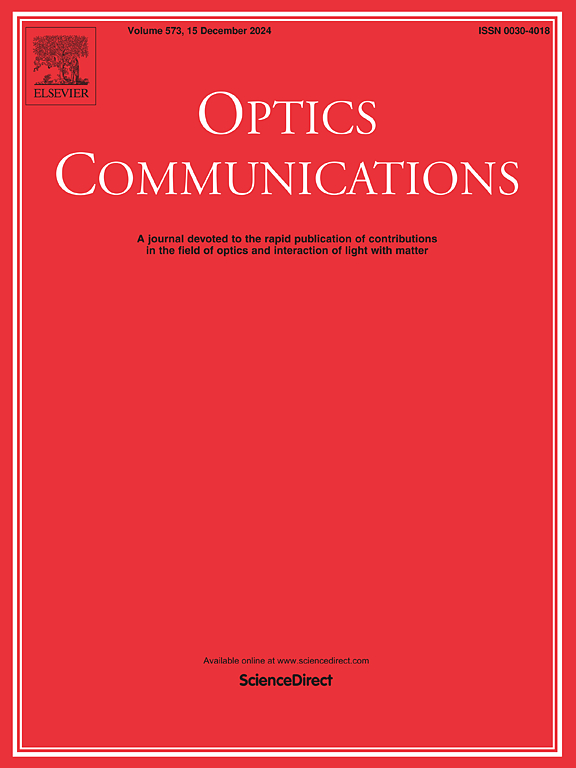Characterization of Er–Ba nanoparticle suspension-doped aluminosilicate optical fibers for 1550 nm amplification
IF 2.2
3区 物理与天体物理
Q2 OPTICS
引用次数: 0
Abstract
In recent years, the scalability of erbium-doped fiber (EDF) towards high power (kW) lasing in amplifiers has been constrained, in part, by modern methods which insufficiently improve the solubility of Er3+ ions in silicate glass. Without adequately declustering the ions, they are likely to interact non-radiatively with increasing concentration, resulting in lower gain and output power. Finding a new means for improving the solubility of erbium ions in silicate fiber would create opportunities to break decades-old benchmarks in fiber amplifiers and lasers. This work compares six EDFs fabricated via a novel doping method utilizing precursors that contain nanoparticles comprising Ba:Er fluorides. These fluorides oxidize during fiber fabrication, rendering a baria-rich environment in the vicinity of the erbium ions-. Through a combination of both the nanoparticles and alumina contained in the precursor, average erbia densities as high as 2 wt.% are realized. Heavily doped fibers with quantum efficiencies up to 0.76 are demonstrated. Additionally, lasing efficiencies that match and even exceed commercial EDFs with similar or lower ion densities are presented. Whether the baria affects the solubility of the erbium ions and our current understanding of the fiber due to the doping process are discussed.
求助全文
约1分钟内获得全文
求助全文
来源期刊

Optics Communications
物理-光学
CiteScore
5.10
自引率
8.30%
发文量
681
审稿时长
38 days
期刊介绍:
Optics Communications invites original and timely contributions containing new results in various fields of optics and photonics. The journal considers theoretical and experimental research in areas ranging from the fundamental properties of light to technological applications. Topics covered include classical and quantum optics, optical physics and light-matter interactions, lasers, imaging, guided-wave optics and optical information processing. Manuscripts should offer clear evidence of novelty and significance. Papers concentrating on mathematical and computational issues, with limited connection to optics, are not suitable for publication in the Journal. Similarly, small technical advances, or papers concerned only with engineering applications or issues of materials science fall outside the journal scope.
 求助内容:
求助内容: 应助结果提醒方式:
应助结果提醒方式:


